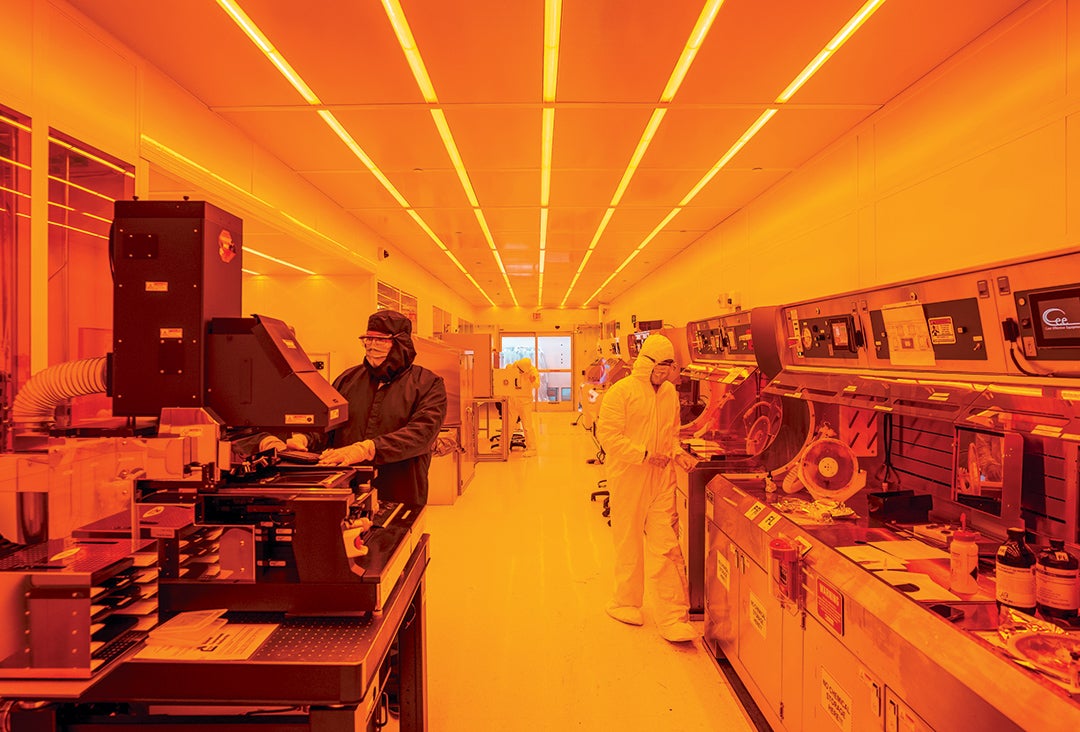Spaces: The Clean Room
ISO perfection

Summer 2023
By Tracey Rhoades
While Rice has many unique rooms and spaces across campus, its nanofabrication facility is the most pristine. Housed in the basement of the Space Science and Technology Building, the facility consists of more than 2,800 square feet of process bays and work spaces with one essential purpose — contamination control.
Opened in 2019, the room supports over 200 unique users from nearly a dozen engineering and science departments and other institutions, including the Texas Medical Center. Specific clean room challenges vary by industry, but the major concern for Rice’s facility is particulates landing on surfaces where devices are precisely engineered down to the nanometer — a billionth of a meter. “One speck of dust can ruin a device, and too many failures like that across too many devices reduces yield,” says Timothy Gilheart ’08, director of operations for the Shared Equipment Authority.
One speck of dust can ruin a device, and too many failures like that across too many devices reduces yield.
A typical home or office has hundreds to thousands to millions of tiny airborne particulates at the scale of 0.5 microns, the benchmark value for certifying clean room particle counts, Gilheart explains. This is truly tiny when 1 micron equals 1 millionth of a meter; a human hair is approximately 100 microns in diameter.
In Rice’s facility, highly specialized air handling and filtration systems drive particle counts down to 100 or fewer 0.5-micron particles per square foot per minute, resulting in its ranking as a Class 100 (or, in newer terms, an ISO 5) clean room and providing an optimal space for such diverse applications as materials science, microelectronics, microfluids, nanotechnology, neuroengineering and photonics.
